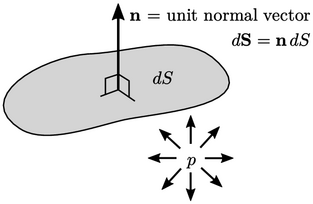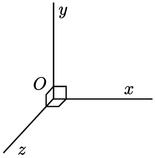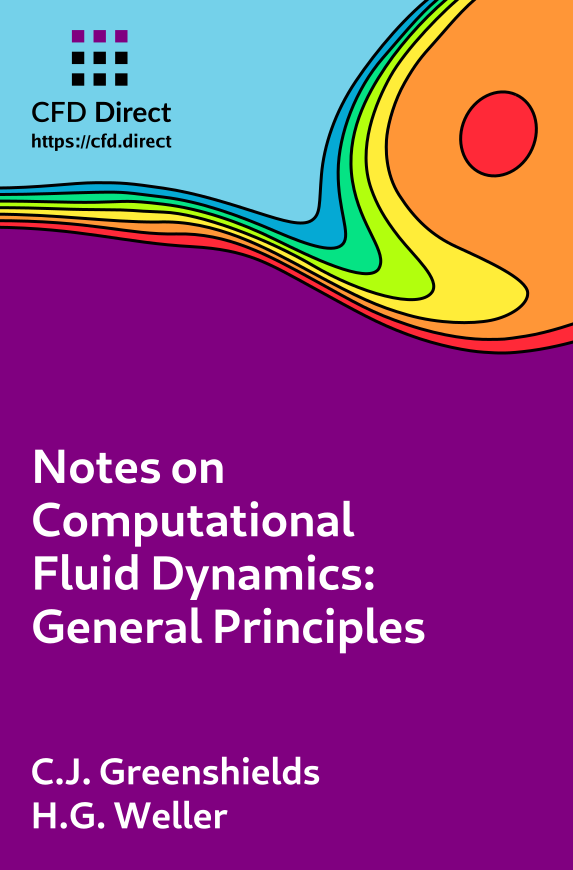2.1 Pressure
The equations of fluid dynamics in CFD treat the fluid as a continuous medium, or continuum. It is continuous in the sense that we consider the fluid as having no “empty space” by ignoring its molecular nature. We assume it has properties that vary from point to point and are continuous throughout the solution domain, and whose derivatives are also continuous.
Pressure is an important property of a fluid,
denoted by  . It describes the amount of force per unit surface area
which acts on a surface, in
the direction perpendicular
to the surface.
. It describes the amount of force per unit surface area
which acts on a surface, in
the direction perpendicular
to the surface.

Pressure  is a scalar that produces a force
vector with direction
normal to the surface. When pressure is applied to one side of a
segment of surface with area
is a scalar that produces a force
vector with direction
normal to the surface. When pressure is applied to one side of a
segment of surface with area  , the force
, the force  points
away from that side by
points
away from that side by
 |
(2.3) |
 is the vector of unit
length, normal to the surface
is the vector of unit
length, normal to the surface
 .
The term vector denotes a geometric entity with magnitude and
direction; a surface can be represented by a surface area vector
.
The term vector denotes a geometric entity with magnitude and
direction; a surface can be represented by a surface area vector  of magnitude
of magnitude  and direction
and direction
 .
.
While pressure exerts a force on a surface, the fluid experiences a
force which is compressive in nature, assuming  is positive.
is positive.
Pressure is measured in SI units of pascal
 .
From Sec. 2.13
onwards, however, we
generally use
.
From Sec. 2.13
onwards, however, we
generally use  to represent the kinematic pressure, in units
to represent the kinematic pressure, in units  , obtained by
dividing the true pressure by a constant density
, obtained by
dividing the true pressure by a constant density  .
.
Scalar fields
The majority of properties, e.g. pressure, temperature, energy, density, volume, etc., can be represented by a single number, or scalar. A scalar field describes a scalar property, e.g. pressure, which varies from point to point across some spatial domain.
Point locations can be defined in any co-ordinate
system of axes, e.g.
Cartesian ( ,
,  ,
,  ), and in any orientation. A scalar field is invariant, meaning the scalar values
are the same irrespective of the co-ordinate system used.
), and in any orientation. A scalar field is invariant, meaning the scalar values
are the same irrespective of the co-ordinate system used.

In this book, space and fields will be described
in a co-ordinate system with right-handed rectangular Cartesian
axes. The axes are constructed by defining an
origin  from which three lines are drawn at right angles to each
other, termed the
from which three lines are drawn at right angles to each
other, termed the  ,
,  ,
,  axes. A right-handed set of axes requires that
looking down the
axes. A right-handed set of axes requires that
looking down the  axis with
axis with  nearest, an arc from the
nearest, an arc from the  axis to the
axis to the
 axis is in a clockwise sense.
axis is in a clockwise sense.

